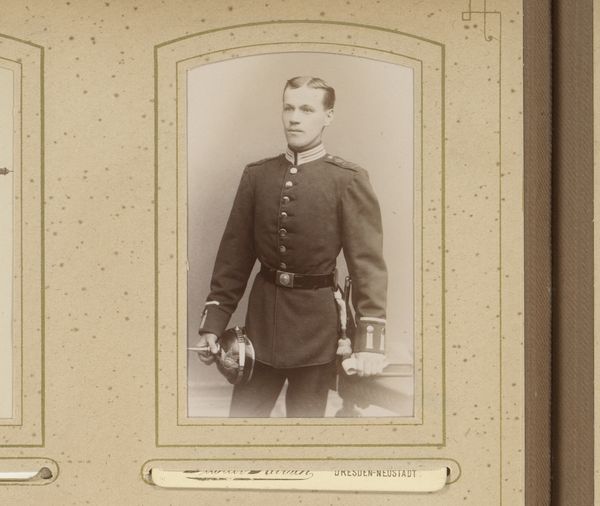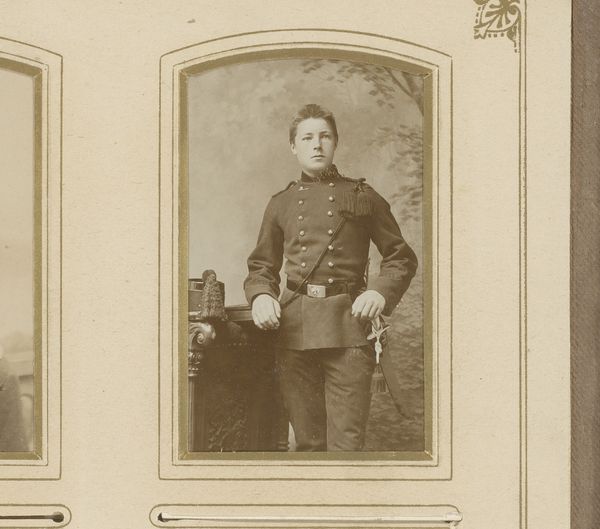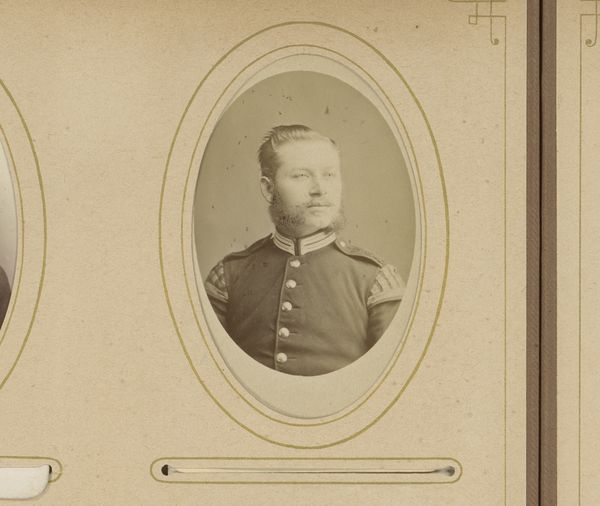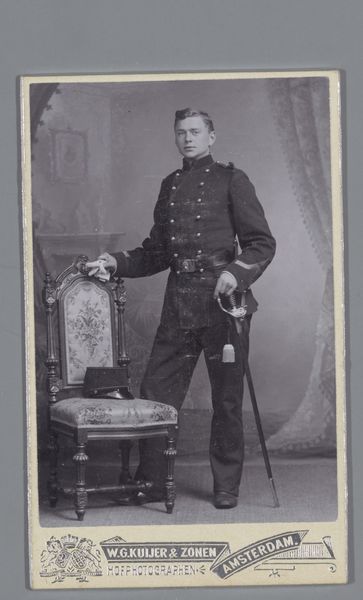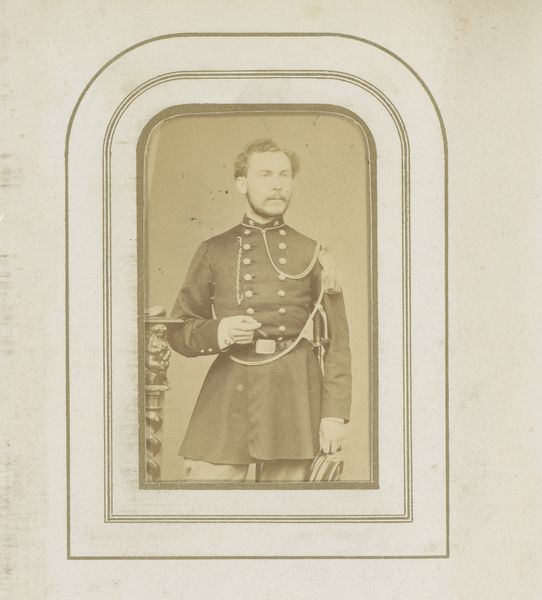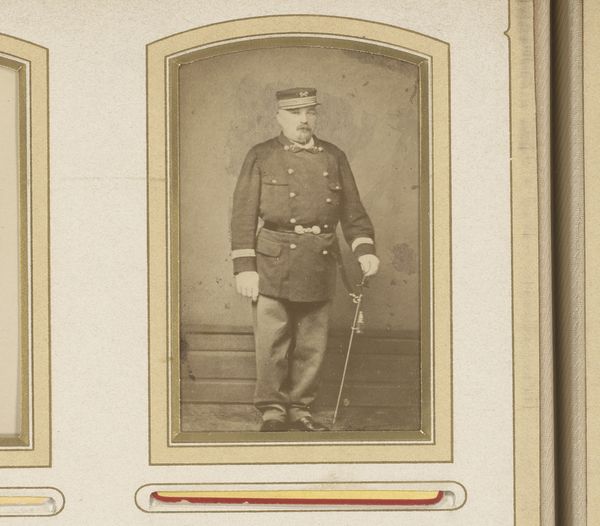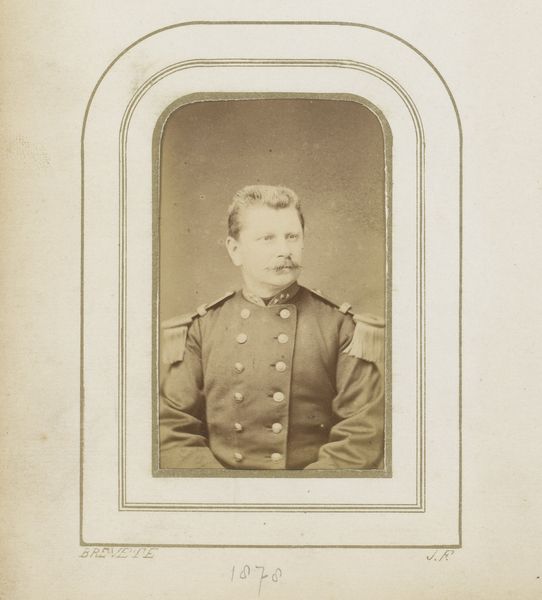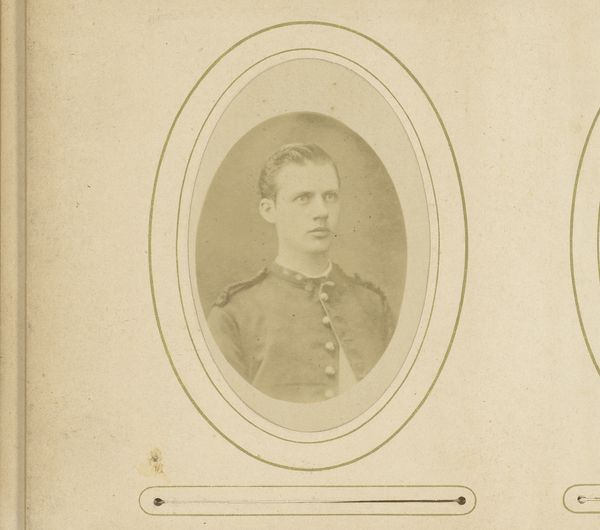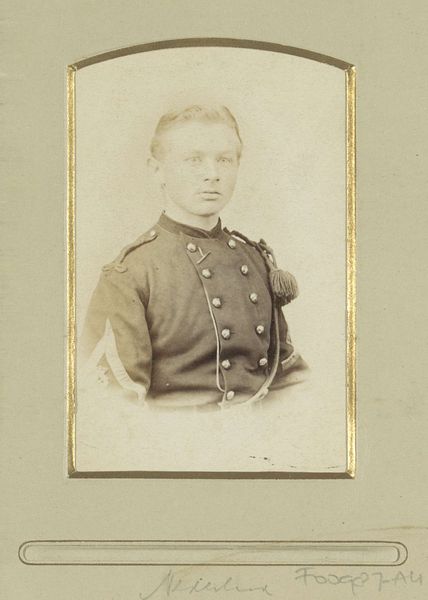
photography
#
photography
#
historical photography
#
19th century
#
genre-painting
#
realism
Dimensions: height 82 mm, width 51 mm
Copyright: Rijks Museum: Open Domain
Curator: Standing before us is a photograph titled "Portret van een staande jonge man in uniform" by Julius Grusche, created sometime between 1878 and 1896. Editor: The sepia tone immediately evokes a feeling of somber respectability. It’s also a very stiff and posed presentation. You can see the detail in the buttons of the jacket and the somewhat austere gaze of this young man. Curator: Indeed. The technical mastery evident in capturing such clarity using photography is remarkable. Considering the photographic processes of the time, what kind of social conditions facilitated the need for the widespread adoption of images for family archives and as indicators of status. Editor: I’m wondering about that uniform—who was he? It’s vital to see him not just as a subject frozen in time, but as part of broader narratives around militarization and masculinity of that historical period. The symbolism inherent in such garb—the implicit power, and what societal expectations weighed on someone so young bearing such symbols of nation and order. Curator: And it prompts reflection about class, the expense associated with photographic processes at the time, access to uniforms, and how class structured access to these technologies. Who was commissioning this image, who produced this very photograph, and what were the working conditions involved. What type of economic transactions happened between a family such as this and an artistic commercial photograph that elevated photography? Editor: Exactly. And did he buy into the ideals that uniform represented, or was he coerced by family obligations? This photo becomes a poignant entry point into examining power structures embedded in gender and national identity formation in the late 19th century. We need to ask what were the sociopolitical climates in which young men felt obligated to be displayed? Curator: Placing it within a history of artistic representations of young men is also pertinent. We're dealing with materials - photography, paper - which, while ubiquitous today, carried vastly different value and accessibility back then. Consider how the photographic print served as a powerful means of representation, even propaganda at a certain point in our history, as it facilitated specific narratives in society. Editor: I’m left pondering how this one captured moment reverberates across generations. It acts like a historical pivot point to reconsider our present conditions and structures as people and societies. Curator: And how such relics as family portrait photographs represent our own human-created and evolved sense of ourselves within societal structures, labor and the historical period.
Comments
No comments
Be the first to comment and join the conversation on the ultimate creative platform.
